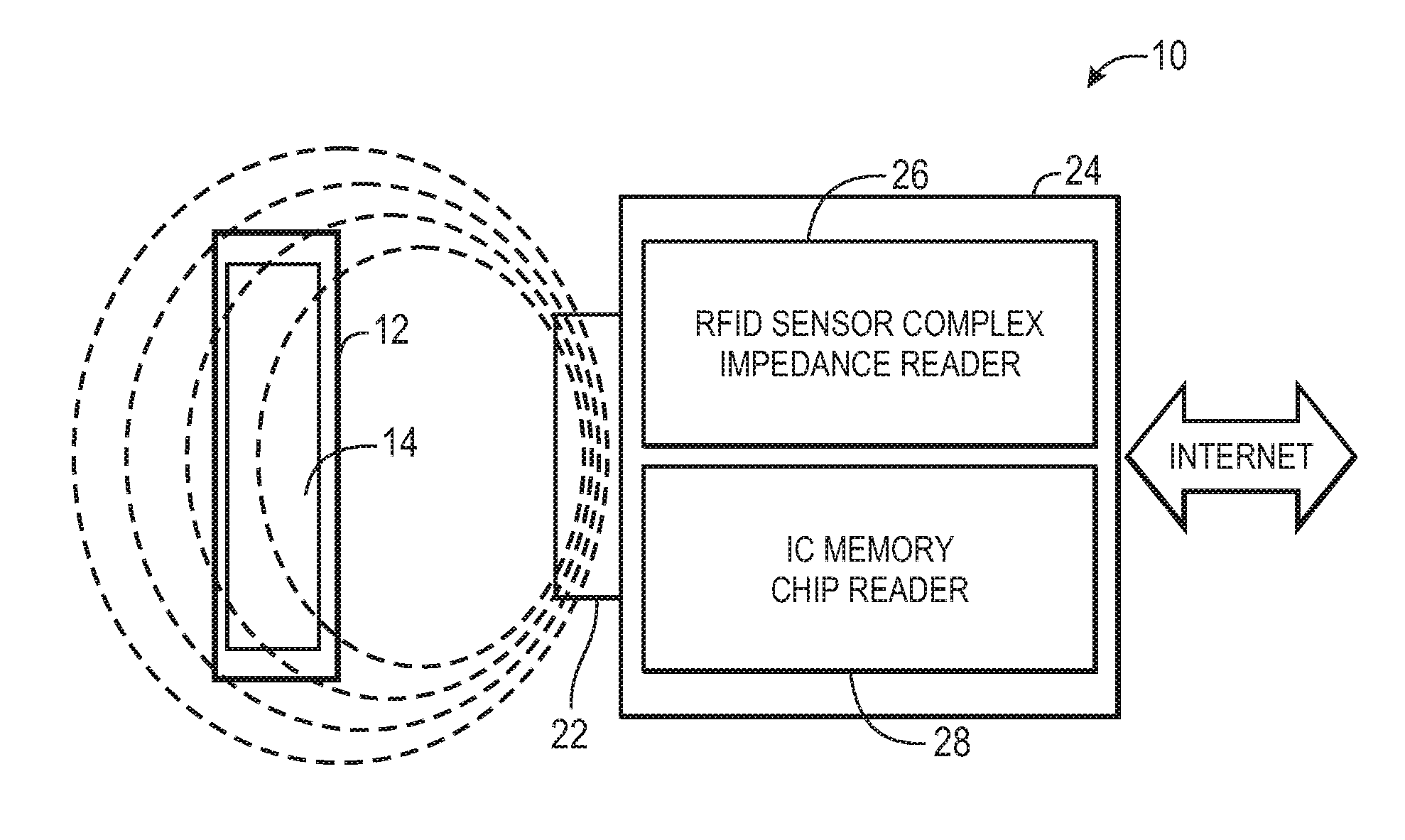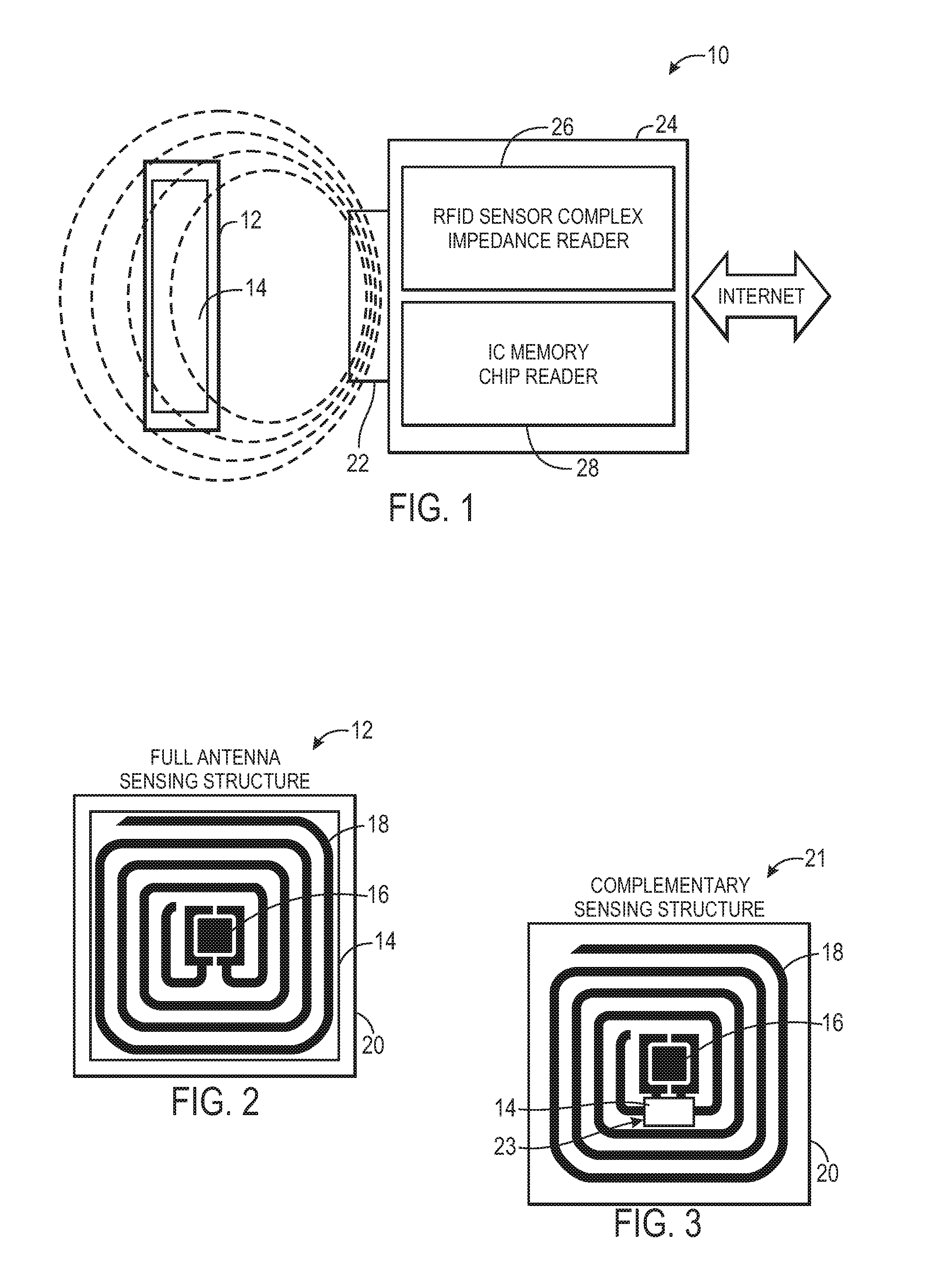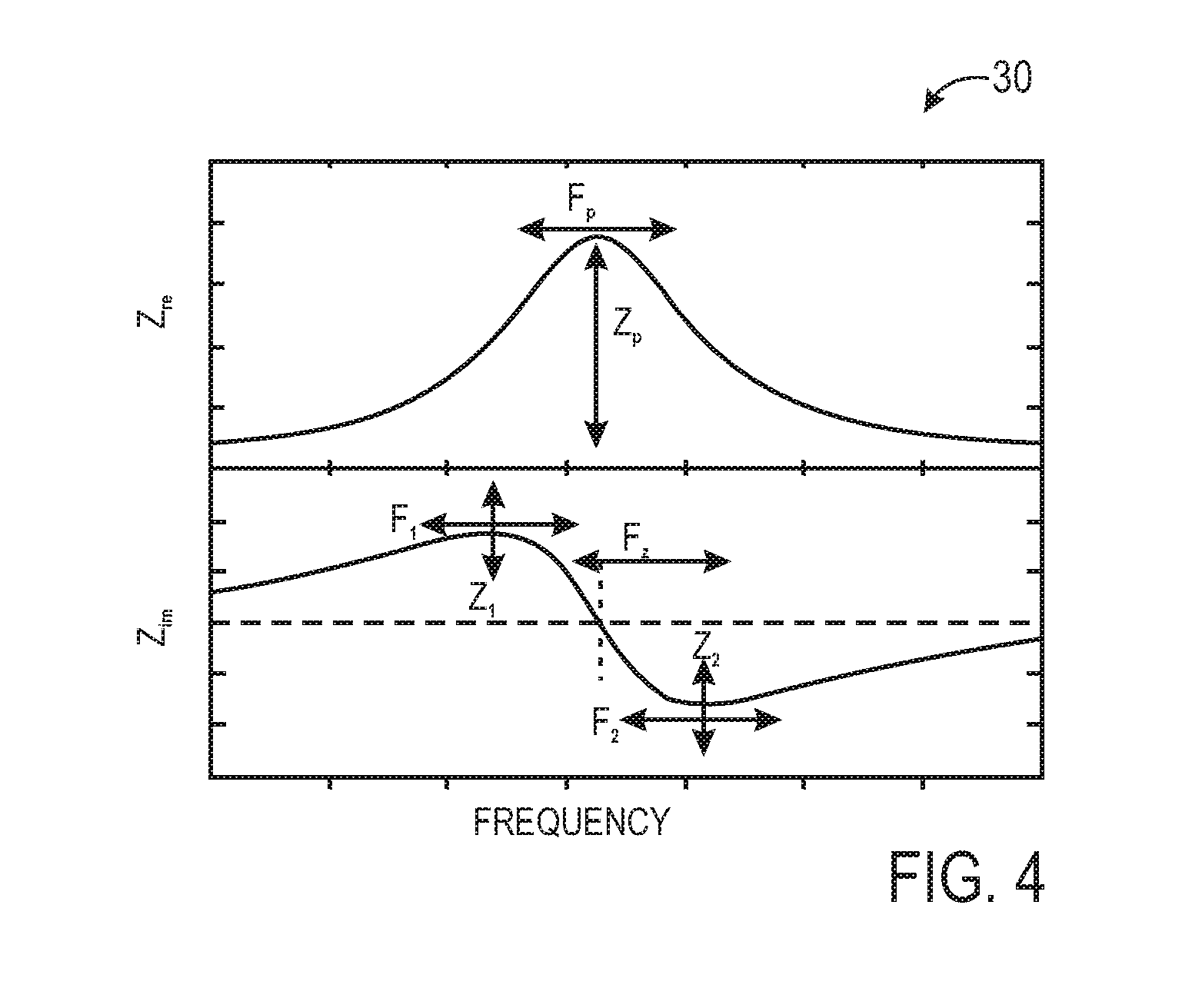Highly selective chemical and biological sensors
a chemical and biological sensor technology, applied in the field of high-selective chemical and biological sensors, can solve the problems of complex array fabrication, limited array sensing ability, and difficulty in accurately sensing and discerning a specific type of vapor or vapor mixture being sensed
- Summary
- Abstract
- Description
- Claims
- Application Information
AI Technical Summary
Problems solved by technology
Method used
Image
Examples
example 1
Selective Detection of Six Vapors with a Single Sensor
[0083]As illustrated in FIGS. 5 and 6, test results were obtained to demonstrate the selective detection of six different vapors, using a single sensor, such as the sensor 12 described above. As illustrated in FIG. 5, the sensor was exposed to the following 10 vapors over a period of time:
1water2methanol3acetonitrile4acetone5isopropyl alcohol6toluene7chloroform8chlorobenzene9trichloroethylene10benzene
[0084]The sensing material used to coat the RFID tag was carefully chosen and provided the ability to selectively detect at least six of the listed vapors. In the present experiment, the chosen sensing material was poly(etherurethane) (PEUT) dissolved in a nonpolar solvent such as dichloromethane. During the experiment, the RFID sensor was incrementally exposed to 10 vapors over a period of time. The test was conducted in steps, where the concentration of each respective vapor was increased with each step. By monitoring changes in ce...
example 2
Selective Detection of Eight Vapors with a Single Sensor
[0089]As illustrated in FIG. 7, test results were obtained to demonstrate the selective detection of eight different vapors, using a single sensor, such as the sensor 12 described above. The sensing material used to coat the RFID tag was carefully chosen and provided the ability to selectively detect the listed vapors. In the present experiment, the chosen sensing material was PEUT dissolved in a nonpolar solvent such as dichloromethane. As previously described, the tests were conducted with incremental increases in concentration. As illustrated in the plot 48 of FIG. 7, the sensor coated with PEUT was able to discriminate the following 8 vapors:
1water21-methoxy 2-propanol3methyl ethyl ketone4acetonitrile5toluene6chloroform7tetrahydrofuran8dimethylformamide
example 3
Selective Detection of Binary and Ternary Mixtures with a Single Sensor
[0090]Vapors chloroform, tetrahydrofuran (THF), and dimethylformamide (DMF) were further selected for measurements of binary and ternary mixtures with a single sensor, as described in EXAMPLE 1. Using a single developed sensor, detection of individual vapors in their binary and ternary mixtures was demonstrated, as illustrated in FIG. 8. Correlation plots 50, 52 and 54, corresponding to chloroform, THF and DMF, respectively, between actual and predicted concentrations of the individual vapors in their mixtures, had excellent correlation coefficients. Vapors concentrations were from 0 to 0.15 P / Po where P is the partial pressure and Po is the saturated vapor pressure. These results demonstrated a unique ability of developed individual sensors to quantify 2-3 vapors in their mixtures. This discrimination has become possible because the sensor's multivariable response was modeled using the first, second, and third p...
PUM
| Property | Measurement | Unit |
|---|---|---|
| humidity | aaaaa | aaaaa |
| frequency | aaaaa | aaaaa |
| frequency | aaaaa | aaaaa |
Abstract
Description
Claims
Application Information
 Login to View More
Login to View More - R&D
- Intellectual Property
- Life Sciences
- Materials
- Tech Scout
- Unparalleled Data Quality
- Higher Quality Content
- 60% Fewer Hallucinations
Browse by: Latest US Patents, China's latest patents, Technical Efficacy Thesaurus, Application Domain, Technology Topic, Popular Technical Reports.
© 2025 PatSnap. All rights reserved.Legal|Privacy policy|Modern Slavery Act Transparency Statement|Sitemap|About US| Contact US: help@patsnap.com



